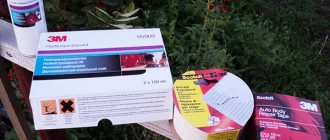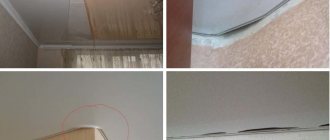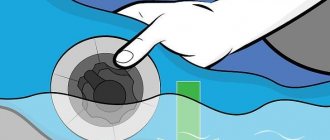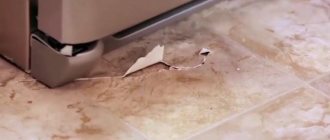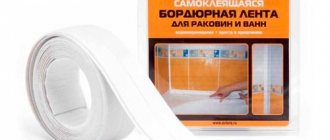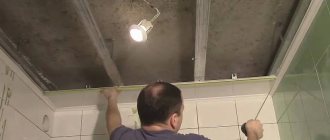Ethylene vinyl acetate, or EVA, is widely used to make shoes, but it is also used to make bags, clothing, children's toys, etc. The material is non-toxic and therefore safe for consumers. It is lightweight, washes well, does not absorb odors well, does not get wet, etc. Ethylene vinyl acetate has a drawback. Products made from this material may tear. In most cases, the cause of the defect is a sharp object. To seal EVA boots, you will need special materials.
Preparing boots for repair and selecting accessories
Repair shops rarely accept rubber shoes for work. If there is a hole or cut, it is better to try to eliminate the problem at home. First you need to prepare the damaged item for repair - rinse it well to remove all dirt and dust, then dry it thoroughly. Immediately before sealing, the damaged area should be degreased with alcohol and vodka, although in most cases washing the product with detergents is sufficient.
Shoes made of PVC, EVA, and rubber should be dried naturally, away from heat sources. If you place boots on a hot radiator, there is a risk of deformation, damage to the appearance, and then restoration will be difficult. Drying and washing boots must be done carefully so as not to increase the area of damage.
To repair boots you will need the following materials and devices (in different cases the set will be different):
- fine-grain sandpaper;
- protective gloves;
- high bonding adhesive;
- napkins for removing excess glue;
- a piece of fabric;
- patch made of waterproof material;
- construction, household hair dryer.
To repair EVA boots, there are ready-made repair kits on sale, although assembling them yourself is much cheaper than buying them.
How to use correctly
The method of working with EVA is practically no different from the usual one, you just need to take into account that it is impossible to glue PVC products with the product.
Instructions for use:
- Clean the areas to be joined and degrease with acetone. You can do without degreasing, but in any case, the areas to be glued must be clean and dry.
- Expand or compress the damaged area so that the porous surface of the ethylene vinyl acetate (usually the inside of the product) is on the outside. This is important because the glossy outer surface does not adhere.
- Apply adhesive material to the porous area of the cut (tear) and leave for three to four minutes.
- After this, bring the edges of the gap together and press them firmly together.
- The final hardening of the product occurs after a day (24 hours).
In a similar way, you can repair, for example, Toptygin winter fishing boots. The manufacturer indicates how to use the glue correctly on the packaging of the composition. Follow the instructions and the cut will literally disappear from your shoes.
Glue selection
To restore the integrity of their boots, some people, without hesitation, buy adhesives like “Momenta” and other universal compounds. In fact, many of them are not suitable for rubber and can even ruin the material. Superglues, despite their water resistance, have low elasticity, so when using boots, the adhesive seam will quickly collapse.
A worthwhile result can only be achieved with the help of special glue for rubber, PVC, EVA, which provides a reliable sealing effect. You can find such products in stores for fishermen and motorists. They eliminate the hole, protect the shoes in the future, and prevent the appearance of new defects in areas susceptible to them.
Desmokol and Nairit, containing artificial rubbers and urethane resins, are considered good adhesives for shoes. They are quite elastic, have high adhesion to most shoe materials, and are even suitable for repairing soles. Of the “Moments”, only “Moment Marathon” is suitable for work, which includes special additives and is capable of sealing any defects in rubber products. There is also “Liquid Patch” glue on sale, ideal for PVC: it eats into the structure of the material, tightly merging with it, forming a single whole. When using this glue there is no need to use patches.
How to seal EVA winter fishing boots? The best choice would be the glue of the same name (“EVA Shoe Glue”) in a white tube, its price is about 130 rubles. The product is useful for emergency repair of boots when fishing or hunting. Main characteristics of the composition:
- microporous structure of the adhesive joint after drying, which does not release heat even at sub-zero temperatures;
- water resistance, possibility of direct contact with moisture;
- easy to clean, not susceptible to clogging with dirt;
- yellowish color, which disappears after drying (the seam will be transparent and invisible);
- no spreading, fairly thick texture;
- the ability to tightly glue punctures, tears, damage along folds, on the sides and corners;
- long service life;
- economical consumption.
The glue has a disadvantage - it cannot be used to repair PVC boots or other products made of polyvinyl chloride. It will also not be possible to attach a PVC patch to EVA using this glue; it will not stick.
Types of rubber for boots
In order to choose what to seal your rubber boots with, you need to know what material the boots are made of. For example, EVA glue is not suitable for PVC boots.
Now the most commonly used materials for boots are:
- PVC (polyvinyl chloride);
- EVA (ethylene vinyl acetate).
Foamed polyurethane and silicone are also used, “classic” rubber boots are now difficult to find on sale. The manufacturer must indicate the material of the boots; in extreme cases, you can consult the seller.
For EVA boots, the best glue is made from the same ethylene vinyl acetate, for PVC - polyurethane glue, and for rubber - glue containing rubber.
Rules for working with EVA
Only glue based on the same material will qualitatively repair products made from EVA (“foam”, foam rubber, as it is called), since it impregnates the porous structure and merges with it. A patch is not needed for small or medium-sized damage. It will be enough to apply glue and the crack will close. For large tears, it is better to purchase a new pair of boots. You need to wear gloves when working with glue. The product must not be used until the glue has completely dried.
The sequence of work is as follows:
- clean the puncture area with sandpaper so that it becomes rough (if a patch is used, clean it too; glue will not stick to a glossy surface);
- compress the area of damage to the product so that the edge of the puncture comes out, so the quality of the seam will be higher (it is better to do this by plunging your hand inside the boot);
- apply glue to the defect, join its edges or apply a patch coated with glue;
- It is better to glue serious tears with two patches - on the inside and outside;
- Place a piece of clean cloth on top of the defect area and place a weight;
- if there are two patches, first place a hard object inside the boot to press the first patch, then fix the glued outer element.
Most adhesives require curing for 24 hours - this is how long it takes for polymerization to occur and the product to be ready for use again.
Advantages and disadvantages of EVA material
| Advantages | Flaws |
| Easy. This quality has attracted manufacturers of children's models. | Excessively susceptible to punctures and cuts from sharp objects. Any wire or glass may leave a defect on the product. |
| Ecologically pure. Does not pollute the environment. A product made from this material is safe not only for adults, but also for children. | Weak anti-slip ability. However, this problem can be easily resolved with the help of a ribbed sole. |
| Lasting. Wear-resistant, defects appear only as a result of punctures or cuts. | |
| Elastic. The appearance of damage on the folds of shoes is a fairly rare occurrence. | |
| Elastic. This property is indispensable in the manufacture of orthopedic models. With the help of the “memory effect”, your feet will be comfortable and comfortable in products made from EVA material. | |
| Does not absorb odors. | |
| Water resistant. It prevents your feet from getting wet, and using boots made from this material you are less likely to catch a cold. | |
| Hygienic. Prevents the spread of bacteria and fungi. | |
| Hypoallergenic. An important property is provided by the use of EVA material in the manufacture of shoes for medical personnel, as well as for small children. | |
| Resistant to solvents. Does not deteriorate with frequent washing and exposure to various oils. |
How to seal PVC boots
Having chosen the appropriate glue, you can begin repairing PVC boots. The patch can be cut from ordinary rubber, and adhesives such as “Liquid Patch” are used without applying a patch at all. The defect site is treated with sandpaper to make it rough, degreased with acetone, and dried. Apply glue to the patch and base, wait a few minutes, and press a piece of rubber against the defect. If polyurethane glue is used, it is recommended to heat it with a hairdryer and only then apply the patch, so the gluing area will be more durable.
EVA shoe glue: instructions for use
Using an adhesive is not much different from using a regular one. It is worth remembering, however, that you cannot glue PVC products with this mixture. Therefore, for example, the repair kit always includes 2 types of adhesive.
Instructions for use include the following steps.
- Before gluing with EVA glue, it is necessary to prepare the surface: clean and degrease with acetone.
- It is necessary to expand or compress the cut so that the inner part of the ethylene vinyl acetate - the porous structure - is on the outside.
- The glue is applied specifically to the porous open part of the cut and held for 3-4 minutes.
- Then the edges are connected and pressed firmly. The adhesive layer must be thin, since a large amount complicates the polymerization process during hardening.
- The glue will finally set after 24 hours.
The video shows repairs using EVA glue.
Sealing rubber boots
To repair ordinary rubber boots, you can use one of the popular techniques.
Anglers method
Special rubber adhesives are sold in stores for fishermen. They are ideal for repairing rubber products, including those in contact with water. Exact instructions are always included with the glue and must be strictly followed. Usually, the surface must first be carefully sanded, then degreased with acetone. A patch is glued only if there is a large defect, and small cracks are filled with glue without a patch. The drying time must be observed without shortening, otherwise the adhesive joint will not be able to gain the necessary strength.
Cyclists method
Bicycle enthusiasts often have a special repair kit available, which includes glue, a patch, a brush for applying the product, and sandpaper. These devices are suitable not only for repairing a broken bicycle tube, but also for sealing torn boots. The technology will be similar:
- sanding;
- degreasing with acetone;
- cutting the patch according to the size of the defect (plus 1 cm allowances on each side);
- uniform application of glue to the surface and patch;
- applying a patch;
- fixation;
- wait until the glue dries.
Some adhesives allow you to use products after just a couple of hours. Although, to improve the quality of adhesion, it is better to wait a day, so the adhesive seam will be stronger and more durable.
Automotive method
Sometimes shoes, boots made of rubber or EVA crack at the bends. In such a prominent place, the patch will not look aesthetically pleasing and will ruin the appearance of the shoes. For a more accurate repair, you should purchase an automotive adhesive-sealant, polyurethane or epoxy compound and apply it without applying a patch. The easiest way is to buy a transparent composition; it will not be noticeable on the product at all. The “Crazy Hands” car glue from Done Deal, which is sold in any auto store, has proven itself to be excellent. It firmly holds the gluing area, protects the shoes from moisture getting inside, and due to its elasticity it does not collapse when the material is further bent.
Hot method
To perform hot gluing, you will need a vulcanizer and a piece of raw rubber. Despite the complexity, the quality of the repair will be at a high level, the patch will stick tightly. Raw rubber is soaked in gasoline for 10 minutes, laid on the defect, and pressed with a vulcanizer press. The device is turned on for half an hour, then turned off. After complete cooling, the press is removed and the product will be ready for use.
Features of gluing soles
The most difficult repairs will occur if the sole is damaged. Of course, you can simply repair a crack, a puncture, or fill it with glue, but the quality of the bond will be low, as will the durability. This “patch” is enough for 1-2 outings in wet weather. You can also carry out repairs in another way:
- take a piece of nylon;
- insert material into the crack;
- heat the soldering iron and solder the crack.
If you seal the defect in this way, the sole will last longer, but it is unlikely that you will be able to wear the boots for even one season. It is better to pre-treat the puncture on a sharpening machine to make the area smoother. Afterwards, you need to degrease the sole, fill the hole with epoxy glue from the outside and inside. After a day, an insole should be placed inside the boot, and the shoes can be used.
In order for repaired boots to serve for a long time, it is important to properly care for them in the future. Shoes should be washed and dried after returning from the street, and periodically treated with a water-glycerin solution. Drying should be done away from the radiator so that the boots do not become deformed. It is better to store them out of season in the box in which they were sold, stuffed with newspapers - this way the pair will retain their shape and attractive appearance.
How to work with ethylene vinyl acetate
It is good to glue objects made of EVA (“foamed rubber”) only with an adhesive agent based on the same material, since it seems to be connected to a porous base, forming a single system.
To repair, you just need to drip the product and the damage will disappear.
This way, no patch will be needed. If the defect is very large, there is no point in repairing the boots.
Work with glue must be carried out with gloves and the item itself can be put into operation only after the composition has dried.
Let's list the stages of the process:
- Use sandpaper to process the hole or tear until it becomes rough; when using a patch, it is also processed;
- compress the defective area so that the corner of the damage is visible from the outside, it is better to do this with a hand placed deep into the boots;
- Lubricate the puncture with the product, connect the edges, and if using a patch, apply it after treating it with adhesive. In case of major damage, use two gaskets on both sides;
- Apply a rag to the puncture site and apply a weight;
- in the case of using two patches, first press the first one by placing a hard thing deep into the shoe, then place the load on the second one.
In most cases, the glue dries in about 24 hours, after which time the product can be used again.
Cyclists method
Bicycle enthusiasts often have a special repair kit available, which includes glue, a patch, a brush for applying the product, and sandpaper. These devices are suitable not only for repairing a broken bicycle tube, but also for sealing torn boots. The technology will be similar:
- sanding;
- degreasing with acetone;
- cutting the patch according to the size of the defect (plus 1 cm allowances on each side);
- uniform application of glue to the surface and patch;
- applying a patch;
- fixation;
- wait until the glue dries.
Some adhesives allow you to use products after just a couple of hours. Although, to improve the quality of adhesion, it is better to wait a day, so the adhesive seam will be stronger and more durable.
